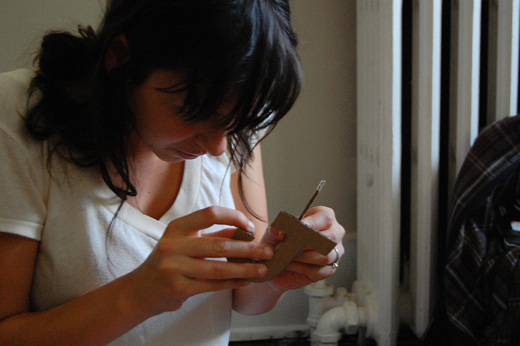
This is part of an ongoing set of one-question emails sent to people we know, or would like to get to know, about things that interest us and inform our collective practice. They’ll be featured on the site weekly, usually on Fridays. These questions are more about unfolding ideas than about the people we’re asking, but we do ask those kinds of questions too.
We’re pleased to continue this project with a question for SRSI and Homework alumnus and one half of the Department of Unusual Certainties, a Toronto-based research and design collective, Simon Rabyniuk.
Where does practice end and real life begin?
There is no division between practice and life. My first reading of this question situates it as something about the experience of the individual, and because of the context I’m receiving it in, something about the experience of the individual artist. Although I think it becomes a more interesting question dealt with in broader terms.
What is practice? For an individual a practice is a personal commitment to an action (i.e. the practice of active listening). I would propose that a fundamental quality of a practice is a conscious intent expressed through the process of trial, reflection, and learning; while routine may be part of one’s practice, intent keeps it from becoming route behaviour. For an artist I would propose that commitment be understood as a lifestyle of exploration in the production of material or embodied relationships. I would also propose that there is a distinction between the singular and plural use of the term. An individual can have many personal practices, while they have a professional practice.
What is real life? Life is form changing through time. Enacted on a sensing being, this change in form becomes a sequence of experiences. Organized as memories these sequences form a narrative and a sense of identity. This definition fails to articulate the social character of a human’ life. Somehow ‘real life’ is different then that. Real life is nested in the colloquial, the work/leisure/boredom cycle, desire, and responsibilities. A day in one’s real life is bisected into what you sell, and what you keep for yourself.
Real life somehow refers to artists having jobs beyond their practice as an artist. The question “Where does practice end and real life begin?” perhaps asks if when an artist’s time is not going towards making things do their practice and real life become separate things within them? Again, I would propose they do not. There are many prominent examples of artists who use their art practice to reflect on and respond to the experience of their present situation. Two examples that may represent a spectrum of approaches are Michelle Allard and Adrian Piper. Allard explores the formal constructive properties of the office supplies she uses in her day job. Piper explores the reaction raced/classed bodies produce in social spaces. One’s experience, including their real life, becomes a source to parse through in ones practice as an artist.
Simon Rabyniuk is a Toronto-based visual artist and member of Department of Unusual Certainties. His work often draws upon performance, video, drawing, and sculpture to explore cities and their systems.
He has presented work across Canada including as part of Hammering Away, Workers Arts and Heritage Centre (Hamilton), Meet us on the Commons, Art Gallery of Mississauga, 7a*11d International Festival of Performance Art (Toronto), the Harbourfront Centre’s Hatch Emerging Performance Series, at Ryerson University’s Modernity Unbound Symposium, and as part of Broken City Labs’ Storefront Residency for Social Innovation(Windsor). In 2011 he recieved support from the Ontario Arts Council through their Emerging Artist Grant .
Cara Spooner has been involved in performance related projects as a dancer, choreographer, designer and curator. She has presented work at Toronto’s Nuit Blanche, XPACE Cultural Centre, The Harbourfront Centre’s HATCH Emerging Performance Project, Pleasure Dome, The Mississauga Art Gallery, The Festival of New Dance, Badass Dance Fun and Stromereien 11. caraspooner.com






















